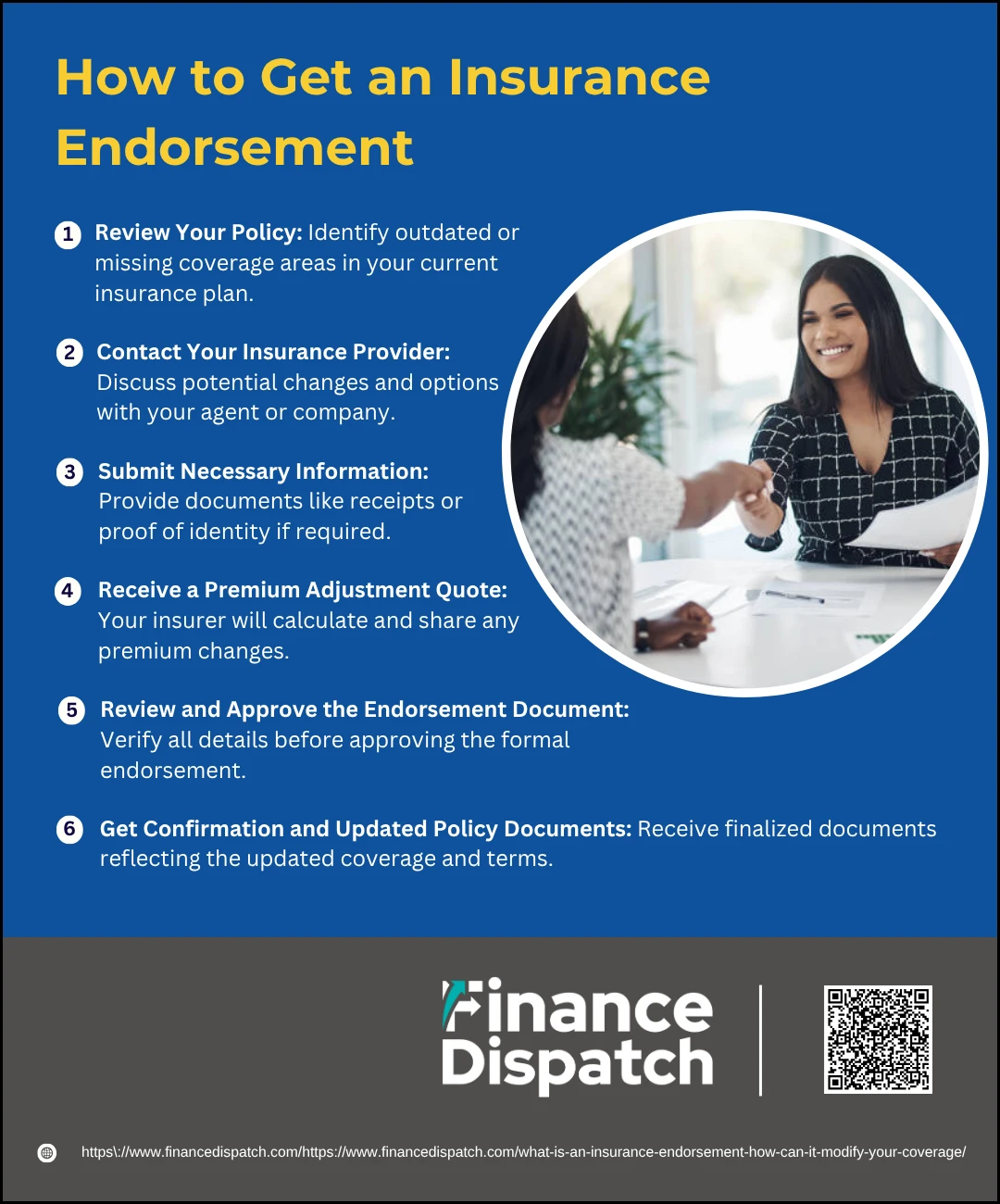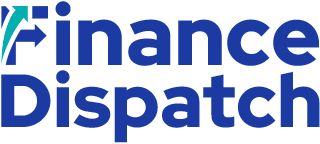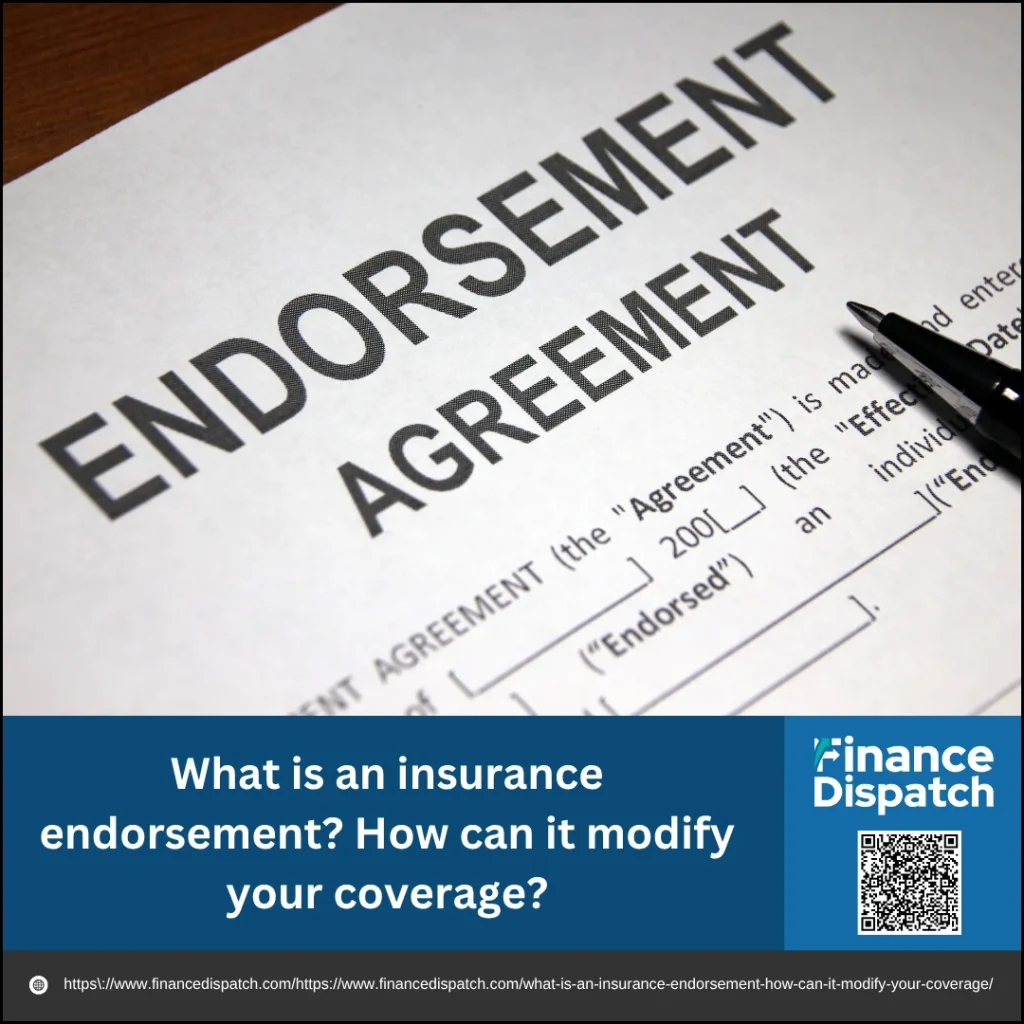Insurance policies aren’t set in stone—they’re designed to adapt to your changing needs. Whether you’re adding new equipment to your business, renovating your home, or simply correcting a detail in your policy, insurance endorsements make it possible to update your coverage without starting from scratch. An insurance endorsement, sometimes called a rider, is a formal modification to your existing policy that lets you add, remove, or adjust coverage as life evolves. In this article, we’ll explore what an insurance endorsement is, the different ways it can modify your coverage, and why it’s a powerful tool for keeping your protection aligned with your real-world circumstances.
What Is an Insurance Endorsement?
An insurance endorsement is a formal amendment made to your existing insurance policy. Rather than replacing the entire policy, an endorsement allows you to adjust specific terms—such as adding new coverage, excluding certain risks, or updating personal details. Think of it as a customizable add-on that tailors your policy to better fit your evolving situation. Whether you’re looking to include valuable items like jewelry, add a newly constructed home office, or correct an error in your policy documents, an endorsement makes those changes legally binding and part of your insurance contract. It’s a flexible, efficient way to ensure your coverage remains relevant over time.
Why Are Insurance Endorsement Important?
Insurance endorsements are important because they provide the flexibility needed to keep your coverage in step with life’s changes. As your personal or business circumstances evolve—whether it’s buying expensive equipment, renovating property, or taking on new risks—your original policy may no longer offer adequate protection. Endorsements allow you to modify your existing policy without canceling it or purchasing a new one, saving time and money. They also help prevent gaps in coverage and ensure your policy remains legally accurate and enforceable. Ultimately, endorsements empower you to customize your insurance to fit your specific needs, offering peace of mind that your protection is always up to date.
 Types of Insurance Endorsements
Types of Insurance Endorsements
Insurance endorsements come in several forms, each designed to serve a different purpose based on the changes you want to make to your policy. They help customize your coverage, making sure it reflects your current needs without the hassle of getting a brand-new policy. Some endorsements follow standard templates, while others are specially created for unique situations. Additionally, some are optional, and others are required by law. Understanding these distinctions can help you make informed decisions about protecting what matters most.
1. Standard Endorsements
These are the most common types of endorsements, created using standardized language approved by insurance regulatory bodies like the ISO (Insurance Services Office). They’re used for frequent, predictable policy changes—such as updating an address, adjusting coverage limits, or adding a new insured person. Because they follow a set format, they’re easy for insurers to apply and widely accepted across the industry.
2. Non-Standard Endorsements
Non-standard endorsements are tailor-made by insurers to meet specific needs that standard forms don’t cover. These are often used for high-value items, unique risks, or special circumstances that require a customized approach. For instance, if you own rare collectibles or a vintage vehicle, your insurer might create a non-standard endorsement to ensure adequate protection.
3. Mandatory Endorsements
Some endorsements are required by law or regulatory rules and must be included in certain insurance policies. These endorsements ensure your policy complies with legal requirements—such as mandatory flood insurance for properties in designated high-risk zones, or state-mandated minimum coverage levels in auto insurance.
4. Voluntary Endorsements
Voluntary endorsements are optional changes you or your insurer may request to better align your policy with your current needs. These could include adding coverage for newly acquired valuables, extending liability protection, or including coverage for home-based businesses. Though they may increase your premium, they offer valuable peace of mind and enhanced protection tailored to your situation.
Key Functions of Insurance Endorsements
Insurance endorsements play a vital role in shaping the details of your policy to suit your specific needs. They allow policyholders and insurers to fine-tune coverage without the need to cancel or rewrite an entire insurance contract. Whether you’re adding new protection, removing unneeded coverage, or making administrative updates, endorsements provide the flexibility and legal structure to ensure your policy stays accurate and relevant.
1. Add Coverage
Endorsements can expand your policy to include protection for additional risks or valuable items not covered under the original agreement.
2. Remove Coverage
You can use endorsements to eliminate certain types of coverage you no longer need, which can help reduce your premium.
3. Modify Coverage Terms
Endorsements can adjust limits, deductibles, or definitions within your policy to reflect changing needs or preferences.
4. Correct Errors
If there are mistakes in your policy—such as a misspelled name or incorrect address—an endorsement can formally correct them.
5. Add or Remove Insured Parties
You can use endorsements to include additional insured individuals or remove someone no longer associated with the policy.
6. Comply with Legal or Regulatory Requirements
Mandatory endorsements ensure your policy adheres to new laws or industry regulations.
7. Clarify Policy Language
Sometimes endorsements are used to revise or simplify policy wording, reducing confusion and improving understanding of your coverage.
 How Insurance Endorsement Work
How Insurance Endorsement Work
Insurance endorsements are formal amendments that change specific terms within an existing policy, allowing you to adapt your coverage to suit evolving needs—without having to cancel and repurchase a new policy. Whether you’re upgrading your coverage, correcting an error, or removing something you no longer need, endorsements provide a flexible and efficient way to make these adjustments. The process is designed to be clear and legally binding so both the insurer and policyholder understand exactly what’s being changed and when those changes apply.
1. Request the Endorsement
The first step involves reaching out to your insurance provider to request a specific change. This could include adding protection for a valuable item, changing an address, updating a name, or removing coverage you no longer need. This request can usually be made at any time—when buying a new policy, during the policy term, or at renewal.
2. Insurer Reviews the Request
After receiving your request, the insurer assesses whether the proposed changes are acceptable under the policy’s terms. They may ask for additional information or documentation, especially if you’re adding new coverage or adjusting coverage limits. The insurer ensures the request aligns with underwriting guidelines and regulatory rules.
3. Draft and Issue the Endorsement
Once approved, the insurer drafts a formal endorsement document. This document outlines exactly what changes are being made, and it becomes an official part of your policy. The endorsement is legally binding and overrides the original terms it modifies.
4. Adjust the Premium (if applicable)
The endorsement may result in a change to your premium. For example, adding coverage for a high-value item could raise your premium, while excluding certain risks could reduce it. Any change in cost will be clearly detailed in the endorsement documentation.
5. Confirm the Effective Date
The endorsement will include an effective date, indicating when the changes begin. This is crucial because coverage under the modified terms starts from this date. Make sure the effective date matches your expectations, especially if the endorsement is being added to address a current or upcoming risk.
6. Receive and Review the Updated Policy
Once finalized, you’ll receive a copy of the endorsement along with an updated declarations page. It’s important to review these documents carefully to verify all requested changes are accurately reflected. Keeping a copy of the endorsement with your original policy helps avoid confusion if a claim ever arises.
Real-Life Use Cases of Insurance Endorsement
Insurance endorsements are more than just paperwork—they address practical, everyday situations where standard policies fall short. From protecting newly purchased valuables to adjusting coverage after home renovations, endorsements allow you to tailor your insurance to real-life changes. Here are some common examples of how individuals and businesses use endorsements to keep their coverage up to date and relevant.
1. Adding Coverage for New Equipment
A small business installs new machinery and adds an endorsement to ensure it’s protected under their commercial property insurance.
2. Covering Home Renovations
A homeowner builds a new deck and uses an endorsement to update the dwelling coverage in their homeowners policy.
3. Scheduled Personal Property
A couple adds an endorsement to insure an expensive engagement ring at full appraised value, which exceeds the standard policy limit.
4. Water Backup Protection
A renter adds a water backup endorsement to cover potential damage from a sump pump failure not covered under the base policy.
5. Extended Reporting Period for Claims
A consulting firm adds a “tail coverage” endorsement to extend the time allowed to report a claim after their liability policy expires.
6. Naming an Additional Insured
A contractor includes a property owner as an additional insured on their liability policy to meet a job contract requirement.
7. Removing Unused Coverage
A driver sells a second vehicle and requests an endorsement to remove it from their auto policy, lowering their premium.
Endorsements by Policy Type
Insurance endorsements vary depending on the type of policy you hold. Whether it’s homeowners, auto, renters, or business insurance, each policy type comes with its own set of risks—and endorsements are the tools that help you tailor coverage accordingly. By understanding which endorsements apply to each policy type, you can ensure that your coverage is both comprehensive and cost-effective.
1. Homeowners Insurance Endorsements
- Scheduled Personal Property: Covers high-value items like jewelry, art, or collectibles.
- Water Backup Coverage: Protects against damage from sewer or sump pump backup.
- Extended Replacement Cost: Increases dwelling coverage to account for rising construction costs.
- Ordinance or Law Coverage: Pays for rebuilding to meet updated building codes.
- Home Business Coverage: Adds protection for business equipment and liability.
2. Auto Insurance Endorsements
- Roadside Assistance: Covers towing, flat tires, and lockouts.
- Rental Car Reimbursement: Pays for rental costs after a covered accident.
- Gap Coverage: Covers the difference between a car’s value and the amount owed on a loan or lease.
- Custom Equipment Coverage: Insures aftermarket modifications or equipment.
- OEM Parts Coverage: Ensures repairs use original manufacturer parts.
3. Renters Insurance Endorsements
- Valuable Items Coverage: Provides higher limits for items like electronics, instruments, or collectibles.
- Identity Theft Protection: Helps recover costs related to identity fraud.
- Earthquake or Flood Coverage: Adds protection for natural disasters not included in standard renters policies.
- Liability Enhancements: Increases or extends liability coverage for specific risks.
4. Business Insurance Endorsements
- Additional Insured Endorsement: Adds third parties like clients or landlords to your liability coverage.
- Professional Liability Endorsement: Extends protection for errors and omissions in services.
- Cyber Liability Coverage: Protects against data breaches and cyberattacks.
- Accounts Receivable Endorsement: Covers lost income due to damaged financial records.
- Extended Reporting Period (Tail Coverage): Lets you file claims after a policy has ended.
 How Insurance Endorsement Affect Coverage and Premiums
How Insurance Endorsement Affect Coverage and Premiums
Insurance endorsements allow policyholders to make strategic adjustments to their coverage—but these changes can significantly impact both the scope of protection and the cost of the policy. When you add or modify an endorsement, you’re effectively rewriting part of your insurance contract. This may involve adding valuable protections, excluding certain risks, or redefining how claims are handled. These adjustments don’t just alter the policy’s terms—they also influence premiums, deductibles, and the overall value you receive from your coverage. Here’s a closer look at how endorsements can affect your insurance policy:
1. Increases or Decreases in Coverage Limits
Endorsements can be used to raise the coverage limit for specific items or categories, such as high-value electronics or fine jewelry. On the flip side, they can also reduce coverage in areas where it’s no longer needed. For example, if you sell a vehicle or downsize a property, you may lower coverage limits accordingly. Any increase in coverage typically results in a higher premium, while reducing coverage may lower your insurance costs.
2. Premium Adjustments
When coverage is expanded, premiums usually rise because the insurer is taking on more risk. Conversely, removing coverage through an exclusion endorsement can reduce your premium. For instance, adding water backup coverage to a home policy will increase costs, while removing protection for an unused detached structure may result in savings.
3. Changes to Deductibles
Some endorsements come with their own deductible, which can be higher, lower, or even zero depending on the type of item or risk involved. For example, a scheduled personal property endorsement might have no deductible, offering more favorable terms in the event of a claim. This can change how much you pay out of pocket when filing claims on that particular endorsement.
4. Modified Claims Handling
Endorsements may change how claims are processed and valued. For example, you might add an endorsement that replaces stolen items at today’s market value rather than their depreciated value (actual cash value). This increases your reimbursement amount but may also lead to a higher premium.
5. Exclusions or Restrictions
Not all endorsements add protection—some limit or remove it. These exclusion endorsements can help reduce premiums by narrowing what’s covered. For example, if your insurance company excludes damage from an aging roof, that risk is removed from your policy, and the insurer lowers your premium accordingly.
6. Policy Clarifications
Administrative endorsements are often used to clarify ambiguous terms or correct errors such as misspelled names or incorrect addresses. While they may not impact coverage or premiums directly, they can help avoid claim disputes and ensure smooth communication with your insurer.
7. Impact on Renewals
Many endorsements remain in force for the duration of your policy and will automatically renew along with it. However, certain endorsements—especially those tied to temporary risks or one-time events—may have an expiration date. It’s essential to review your declarations page at each renewal to ensure any desired endorsements are still active and relevant.
When Should You Consider an Insurance Endorsement?
You should consider an insurance endorsement any time your circumstances change in a way that affects your coverage needs. This could include purchasing high-value items like jewelry or electronics, renovating your home, starting a home-based business, or taking on new business risks. Endorsements are also useful for correcting errors in your policy, adding another insured person, or updating your policy to meet legal requirements. Essentially, if your current policy no longer fully reflects your assets, activities, or exposures, an endorsement can help you stay properly protected without the cost or hassle of buying a new policy. Regularly reviewing your policy—especially during life or business changes—can help you identify when an endorsement is needed.
 How to Get an Insurance Endorsement
How to Get an Insurance Endorsement
Obtaining an insurance endorsement is a proactive way to ensure your policy evolves with your changing needs—whether that means adding coverage for a newly purchased item, removing outdated protection, or making corrections. Unlike buying a brand-new policy, an endorsement is a flexible amendment that’s added to your existing contract, saving time and often reducing costs. While the process is generally simple, taking the proper steps helps ensure that the changes are accurate, legally binding, and tailored to your situation. Here’s how to go about getting an insurance endorsement:
1. Review Your Policy
Begin by examining your current insurance policy to identify areas that may be outdated, insufficient, or no longer relevant. Look for any recent changes in your life, property, or business that may affect your coverage needs—like renovations, new assets, or a shift in risk exposure.
2. Contact Your Insurance Provider
Reach out to your insurance agent or company and explain what changes you’d like to make. They’ll help determine whether an endorsement is the best solution and which type is appropriate. This is also a good time to ask questions about how the endorsement might affect your policy and premium.
3. Submit Necessary Information
Depending on the nature of the endorsement, your insurer may require additional documentation. For instance, if you’re adding coverage for a valuable item, you might need to provide a receipt or professional appraisal. For a name or address change, updated identification or proof of residence might be needed.
4. Receive a Premium Adjustment Quote
Once your request is reviewed, your insurer will calculate how the change affects your premium. Adding coverage often leads to a premium increase, while removing or limiting coverage could lower your costs. You’ll receive a breakdown of these adjustments before finalizing the endorsement.
5. Review and Approve the Endorsement Document
The insurance company will issue a formal endorsement that outlines the policy changes. It’s crucial to read this document carefully, checking for accuracy in the updated coverage details, effective date, and any new terms or conditions. Approve the document only when you’re sure everything is correct.
6. Get Confirmation and Updated Policy Documents
Once approved, the insurer will finalize the endorsement and issue updated policy documents, including a new declarations page. These changes are now legally part of your insurance contract. Be sure to save copies of all documents for your records in case you need to file a claim or verify coverage later.
Conclusion
Insurance endorsements are essential tools for customizing your policy to match your changing needs. Whether you’re adding valuable items, adjusting coverage limits, correcting details, or complying with new legal requirements, endorsements offer a flexible and efficient way to update your existing insurance without starting from scratch. They not only help you stay adequately protected but also allow you to manage your premiums effectively. By understanding how endorsements work and when to use them, you can take greater control over your insurance coverage and ensure it continues to serve you well as life and business evolve.



